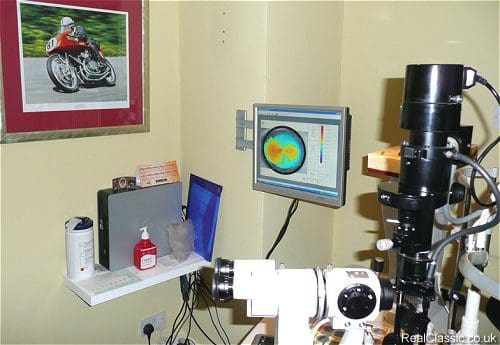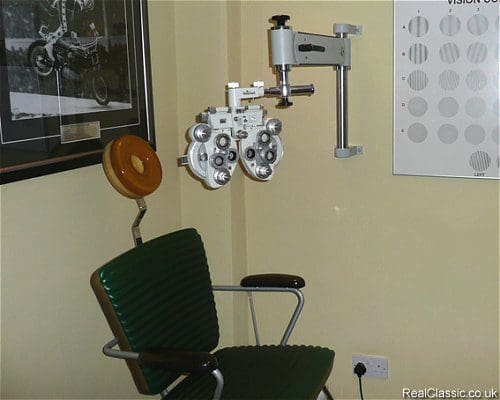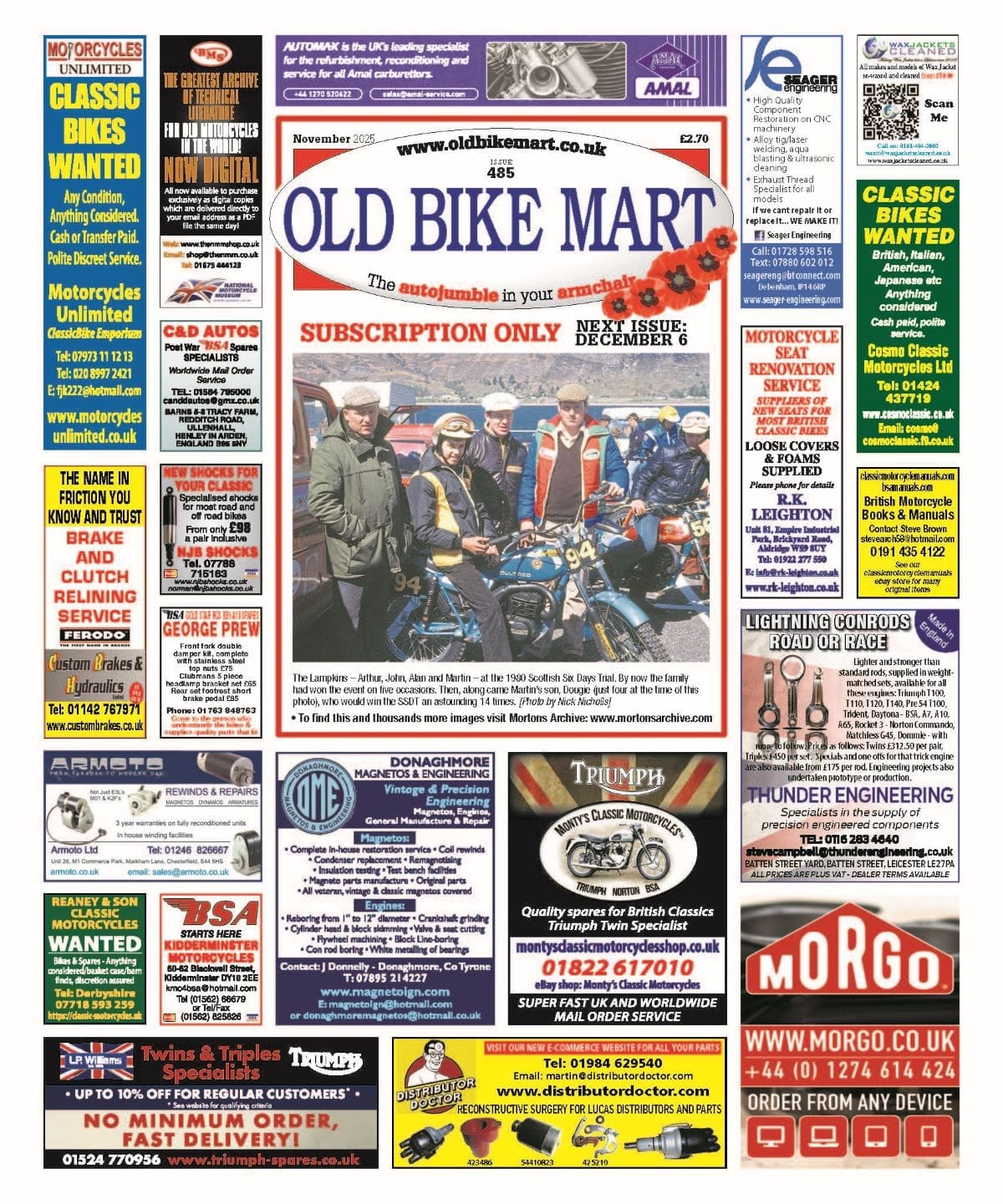Enjoy more classic motorcycle reading, Click here to subscribe to one of our leading magazines.
All roads users need clear vision to drive or ride safely. Motorcyclists have to cope with visors and goggles, and classic riders frequently suffer from deteriorating vision, too. Paul Miles, RC’s resident professional eye expert, guides us through the available options – starting with getting the most from your eye test…
By popular (well several, OK a few) demand here’s a review of problems and possible solutions that the visually-challenged rider might encounter. Like a lot of classic motorcyclists, you might be somewhat older than, say, forty. Over 50% of the adult population in the UK have a significant visual defect and it’s more prevalent as you age, so it’s almost certain that you’re not seeing quite as well as you did when you were younger.

When giving eye tests for my day job, I often hear the refrain; ‘I see perfectly well and pass the driving test standard without even a need to put on my glasses’ or some suchlike. Well, bully for you. The DSA eyesight test equates to approximately 66% vision, a standard only required in one eye and with no peripheral visual checks (SMIDSY, anyone?). This would equate to your BSA twin only running on one cylinder and that with broken piston rings, but it’ll still do 31mph, thus exceeding the speed limit — golly.
Not quite so smug now, eh?
Most folk with healthy, but ageing, eyes can achieve the 100% central vision standard, 20/20 if you like. But, in order to do this you will probably require some form of eye correction.
So what do I need to buy, Doctor Paul?
Before you spend any money, you will need an up to date comprehensive eye examination. Explain to the optometrist that you are a motorcyclist and would like to have the best possible vision whilst riding in order to maximise your chances of staying alive, not just if you really need them in order to continue driving. If, which is likely, you end up with a small (or larger) prescription for distance vision, ask if you can go outside in the street and see if it makes a difference. If it does, by even a small amount, consider getting some glasses made up as they will help, especially when riding at night or when you’re tired.

Ask to have the results of your visual field check explained so that you more fully understand how much worse your sight is ‘out of the corner of your eye’. This may make you more visually aware and might even save your life. There’s no ‘sixth sense’ only good vision and awareness.
If you’re really lucky, you might even find an optometrist who will be able to test your contrast sensitivity. Eye tests are invariably carried out using a chart with black letters on a white background — absolutes, if you like. The real world is somewhat more blurred, if you’ll pardon the pun. As we age, our contrast sensitivity decreases rapidly, hence the dislike of night driving and increased awareness of glare. It’s a real problem.

A CS test shows you how your vision deteriorates in less than perfectly lit conditions; to reiterate, reading the bottom line on the chart does not mean you have perfect vision, it just means that you can read the bottom line on the chart in perfect conditions. The picture of two charts resting against a piece of topical furniture show a ‘normal’ chart on the left, with a CS chart alongside. Notice how the letters fade on the latter, allowing us to calculate your sensitivity losses. If your optician doesn’t have one, ask them why not or go elsewhere.
——————-
Next episode: choosing frames and lenses, and the right coatings…


